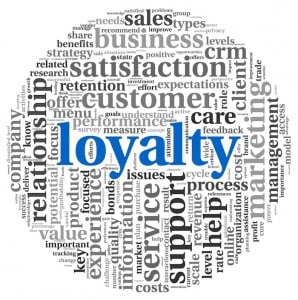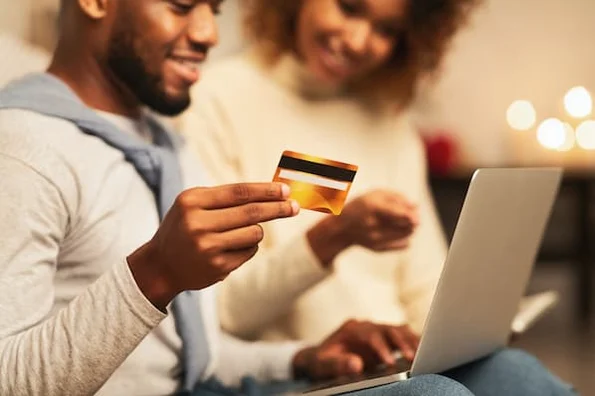 Today we give consumers a great deal of credit for their rational and thoughtful thinking. From their growing demands on corporations for more responsibility and transparency to their increasingly savvy ways of investigating options, making selections and evaluating the merits of their purchases—it would seem that sensibility is sweeping the masses. But marketers may be remiss to underestimate the power that day-to-day habits, routines and traditions still have over consumer preferences, and the opportunity to create brand-specific rituals as a way to lock in long-term brand loyalty.
Today we give consumers a great deal of credit for their rational and thoughtful thinking. From their growing demands on corporations for more responsibility and transparency to their increasingly savvy ways of investigating options, making selections and evaluating the merits of their purchases—it would seem that sensibility is sweeping the masses. But marketers may be remiss to underestimate the power that day-to-day habits, routines and traditions still have over consumer preferences, and the opportunity to create brand-specific rituals as a way to lock in long-term brand loyalty.

Brand Rituals. What Are They?
A brand ritual is a behavior that customers build with a certain brand that becomes a key part of their experience in the category. It can start out as a simple consumption pattern but develops over time into a deeper bond. For a marketer, the ideal scenario is when a ritual becomes an integral part of people’s lives; when it creates an enriched experience in a unique way that only the brand can provide. For the brand, this helps lead to the strongest levels of loyalty from its core consumers and translates to predictable behavior and sustainable sales growth. As small as these kinds of behaviors may be, their influence can be much more resilient than the temporary sales lifts that can come from promotions and campaigns alone.
Studies Show…
Product-related rituals have long been studied by anthropologists and sociologists, but research today continues to undercover new ways in which rituals affect consumers’ minds and experiences. A recent study conducted by the University of Minnesota and Harvard University tested the notion that ritualized gestures enhance ensuing consumption. The study’s findings raised intriguing possibilities, as various ritualized gestures elevated the participants’ enjoyment of foods solely by focusing their interest and involvement in the moment.
As we consider these implications in the marketplace, it’s no wonder that repeatable actions like popping the top off a Pringles can or breaking off a piece of a Kit Kat bar have stood the test of time, become integral parts of the consumption experience and are woven into the equities of the brands. But CPGs aren’t the only ones that can reap the benefits. Savvy retailers looking for ways to distinguish themselves from the competition have turned to the power of the ritual. Costco, for example, is famous not just for its bargains, but also for its free samples. It’s become an essential weekend custom for countless Costco customers around the world to combine grazing with routine grocery shopping. Customers have also become accustomed to Costco as a place to learn about new products firsthand, and for many, the trip has become a treasure hunt.
Building a Ritual: Top Down or Bottom Up
In its simplest form, there are two ways that a brand ritual emerges — top-down from the brand or bottom-up from the consumer. Let’s consider two examples of rituals from the beer category:
Top-Down - The Guinness Pour is a two-part pouring process that has become an essential element of the Guinness brand experience; drinkers wouldn’t accept it any other way. Served in a specific tulip-shaped glass, Guinness is poured until ¾ full at a 45-degree angle, forming a creamy head. After allowing the initial pour to settle, the remainder of the glass is filled until the head forms a slight dome over the top of the glass—a process said by the company to take approximately 120 seconds. In this case, the brand has manufactured a ritual that elevates the experience above others, while building anticipation and engagement around the moment of consumption.
Bottom-Up – Corona and lime are an iconic pairing, although its origins remain a mystery—many stories circulate but no one knows for sure. A ritual that grew in popularity over time among consumers, it was eventually recognized by the brand and capitalized on; by marketing it back to consumers as the only way to have a Corona, the pairing is now a critical component of the experience, an equity for the brand, and a key differentiator from the competition.
Whether it is from the top-down or bottom-up, a successful ritual helps cultivate a deeper relationship between brand and consumer. But not all rituals have the same sticking power. A few guidelines, when followed, will help rituals last and increase consumption:
- Gimmick-Free: Keep it simple; focus on inherent behaviors that naturally complement the product and stem from real consumer needs/desires.
- Discovered: This isn’t always possible, especially with a new product or brand, but it’s easier to ritualize behavior that already exists in some way, rather than try to impose something completely new.
- Consistent: Rituals rely on repetition and reinforcement. Therefore, it’s critical that marketing messages communicate the same preferred behavior over time, to allow it to take hold with core consumers.
- Easily Shareable: The best rituals are owned by the devotees and passed on by word-of-mouth and observation, in their real-life contexts.
A few noteworthy examples of rituals from the year:
Coca-Cola Sharing Can
Introduced in Singapore earlier this year, the new product resembles a typical 12 ounce can but can be easily twisted and separated into two individual containers. The idea is magnificently on brand—it is part of a host of activities by Coca-Cola to support its “Share Happiness” campaign, while at the same time it adapts a brand new ritual that has caught consumers’ attention and gone viral through social media. YouTube, Twitter and Facebook were buzzing with pictures, video shares and comments. Until now, consumers have shared Coke with friends in various ways, but sharing a can hasn’t been easy until now.
Halloween, Aussie Style
Ten years ago, Halloween was a ritual that was not widely embraced by Australians. Since then, the holiday and its accompanying rituals have trickled into neighborhoods across the country and are beginning to pick up momentum. Halloween-themed products have risen in popularity by 20 percent since 2012, with costumes and pumpkins leading the way.
Woolworths (Australia’s largest supermarket chain) saw pumpkin sales spike to 89,000 kilograms leading up to the holiday this year—the custom of carving is now well entrenched. But in true Aussie style, customers have been adding their own twists to this tradition. Woolworths saw a rise in watermelon sales as well, for carving jack-o-lanterns that are also an easy, healthy snack for the family to enjoy.
Is there a potential opportunity for Woolworths to take ownership of Halloween rituals while they are still growing and become THE retailer for the holiday? Could Woolworths be the first retailer to introduce the Watermelon Patch, where families come every year to pick out the biggest and best watermelons? (And while there, stock up on all the decorations, costumes and lollies that the holiday inspires?)
There is clearly a first mover advantage when it comes to building brand rituals, with a huge potential to increase brand consumption.
Brand Awareness

![28 Brands That Go By Different Names in Different Countries [Infographic]](https://53.fs1.hubspotusercontent-na1.net/hubfs/53/%5BAgency_Post%5D/Blog_Images/brand-names-different-countries.png)
